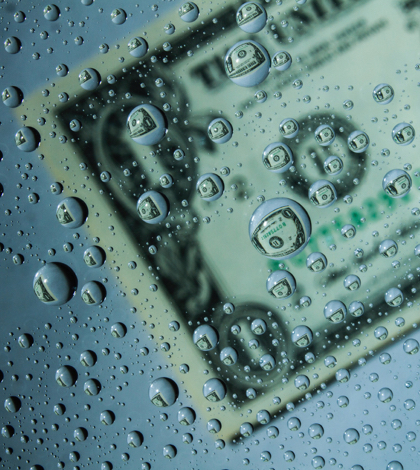East Valley Water District customers would pay up to $750 annually
Though East Valley Water District’s (EVWD) plan to build a water recycling plant was unanimously approved by the San Bernardino Valley Municipal Water District’s (SBVMWD) Board of Directors in March, the proposed Sterling Natural Resources Center is now estimated to cost $150 million more than the original projection based upon a third-party study. The independent estimate projects the large sewage plant, proposed to be built to meet full future capacity and to be financed and owned by EVWD, would effectively double the cost to construct, topping out at $300 million.
A study by Carollo Engineers – among the nation’s largest water and wastewater engineering firms – conducted for the city of San Bernardino, determined the actual cost of the plant, if constructed to its full capacity, would be double the initial cost of $150 million as estimated by EVWD.
SBVMWD’s March certification vote of the Environmental Impact Report was needed so they could both capture and treat EVWD’s wastewater, and also deposit the treated water into one of three groundwater recharge locations and potentially supply supplemental water to the Rialto Channel when needed for environmental benefits.
“The Carollo study confirms that this sewage plant will be a financial disaster for our community,” said Toni Callicott, president of San Bernardino’s Board of Water Commissioners. “We’ve always believed EVWD underestimated the plant’s cost. But the extent to which they miscalculated is alarming.”
Currently, EVWD customers receive waste water services from the City of San Bernardino’s Water Department, which has some of the lowest sewer rates in the region. The proposed EVWD sewage plant could cost each EVWD customer $15,000 over a 20-year period, or $750 per year. Projections indicated that the plant’s new estimated cost is roughly ten times the amount of EVWD’s annual budget.
Several thousand San Bernardino residents are EVWD customers and would be burdened with the costs of building the wastewater treatment plant. This has prompted concerns of both the city and its residents served by EVWD.
In developing its estimate of the project’s costs, Carollo used the planning and environmental documents prepared and provided by EVWD and its planning partner, SBVMWD. Carollo’s inclusive study also cited the inherent costs of comparative sewage plants and technology in southern California in order to provide a more accurate projection.
However, Carollo’s comprehensive study also noted that the water produced from the proposed Sterling Natural Resources Center could not be returned to the groundwater basin without being desalted. EVWD’s plans do not include a desalting facility. Carollo concluded that EVWD and SBVMWD’s cost estimates lack various facilities and treatment processes that would be required. The cost of necessary desalting facilities could add an additional $100 million to the cost of the project in order to meet ground water basin water quality standards.
Prior to the city of San Bernardino commissioning Carollo to provide the independent study, the Sterling Center had other issues plaguing the project. Independent analysis of the draft Environmental Impact Report found the project would have significant harm on local water quality, public health and environmental habitat.
EVWD also illegally circumvented a public process when it avoided the San Bernardino Local Agency Formation Commission (LAFCO). The City has filed lawsuits on both issues. The Carollo study now forms a trio of problematic issues for the intended sewage treatment plant. The plant must still undergo review by other regulatory agencies, including the Regional Water Quality Control Board.
“This plant has always had serious public health and environmental issues,” said Mayor R. Carey Davis. “The Carollo study now confirms it would also be a massive financial burden for our City’s residents and businesses. This is unacceptable.”
Although the city of San Bernardino had requested that EVWD and SBVMWD undertake analyses similar to Carollo’s, these requests were denied. The city felt obligated to independently determine the cost of the building plans but used EVWD and SBVMWD’s plans.
“There’s not a better firm in the country to pinpoint the cost of a large-scale sewage plant,” said Stacey Aldstadt, general manager of the City’s Water Department. “This is a conservative, but accurate estimate. EVWD and Muni should heed its conclusions.” Aldstadt continued saying, “The Sterling sewage plant is a $300 million mistake. We are simply asking for them to be honest to their ratepayers, as they will ultimately be the ones on the hook for this massive project.”
The estimates for capital costs apply only to construction of a new waste water treatment facility. Calculations for annual operation and maintenance costs are estimated to be an additional $175 to $215 per year per customer.
 California Water News Daily Your Source For Water News in California
California Water News Daily Your Source For Water News in California


